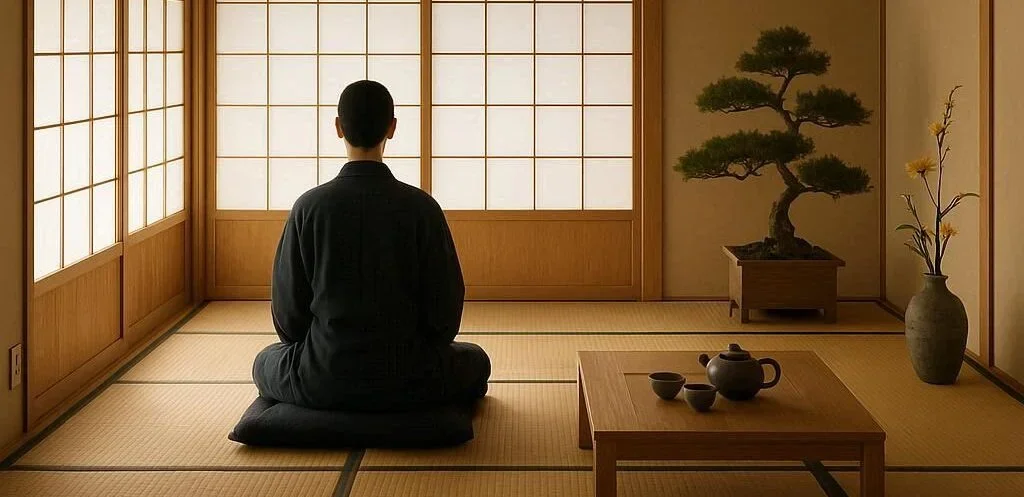508 views Calligraphy as Meditation: The Brush that Writes the Soul
Introduction
If you have ever walked into the quiet corner of a studio, the air humming with the soft hiss of ink, you may have felt a sense of calm settle in your shoulders, as if the world outside merely paused. That tranquility is no accident: calligraphy, the art of expressive writing, can be a conduit for deep meditation. This post takes you on a 1 300‑word journey through the intersection of penmanship and mindfulness, exploring how the simple act of drawing a stroke can turn the mind into a soft, steady water, and how a daily brush ritual becomes a disciplined way to write our own souls.
1. The Origins of Calligraphic Meditation
The roots of calligraphy stretch back to ancient China, where the cursive hand (草书) evolved not just as a writing system but as a controlled breathing exercise. Monks on the Tang Plateau trained with bamboo brushes, ink, and rice paper, believing that impeccable strokes could mirror the steadiness required for chanting. In the West, the Renaissance brought humanist script as a doorway to intellectual rebirth; slow, deliberate strokes were seen as a path to clear thinking. In both traditions, the whip‑in‑the‑air is the same: an instrument to slow the breath, align the hand, and center the mind.
Over centuries, calligraphy developed from a utilitarian skill into a meditative practice. A key quote from a Japanese Zen master, Miyoshi, 1714, reads, “When the brush is in your hand, the world is written on your mind.” While not a direct allusion to mindfulness, it captures the core idea: action equals awareness.
2. Sensory Connection: “Feel the Ink”
Unlike many mental exercises that rely on verbal repetition, calligraphy demands constant sensory feedback:
- Grip – The way the hand hugs the pen or brush changes with every stroke. A relaxed wrist lowers tension.
- Pressure – Ink flows from the nib only when you apply the right amount of force, teaching nuanced control.
- Sound – The subtle slap of brush on paper creates an auditory cue that anchors you in the present.
- Haptic – The resistance you feel when the brush bends is a physical reminder of the mind’s subtle fluctuations.
These constant stimuli create a closed sensory loop, an environment ideal for mindfulness. The brain is left with little external output to gather; instead, it focuses fully on proprioception, breath, and intention.
3. Breath and Motion: The Rhythm of Strikes
One of the most powerful aspects of calligraphy is its natural alignment with breath‑controlled motion. When a calligrapher starts a stroke:
- Inhale – A long, steady breath gathering the room’s energy.
- Out – Apply pressure to the brush, guided by the rhythm of exhalation.
- Relate stroke length to breath hold – a longer stroke simply means a longer inhale.
A study by the University of Tokyo’s Mind‑Art Lab (2019) found that participants practicing calligraphy reported a 32 % decrease in cortisol levels after just 15 minutes of daily firm strokes. The research linked the breathing patterns of skilled calligraphers to similar patterns in deep‑sleep meditation, further cementing the link between pen and physiology.
4. Structured Steps to Begin Your Calligraphic Meditation
Below is a practical, 30‑minute routine you can follow at home. You’ll need a smooth‑paper pad, a set of brushes or fountain pens, and ink or paint.
| Time | Activity | Purpose |
|——|———-|———|
| 0–5 min | Set intention | Draw the shape of a circle; close eyes, note what you want to let go of. |
| 5–10 min | Warm‑up strokes | Horizontal lines—focus on breath, feel pressure. |
| 10–20 min | Script practice | Write a single word or phrase—e.g., peace—in a style you enjoy. |
| 20–25 min | Freeform | Let ink run or dab motions—this is creative release. |
| 25–30 min | Cool‑down reflection | Slowly review the piece, note sensations; jot a sentence in regular font. |
The structure keeps the mind focused while allowing room for creativity. Over time, you’ll notice verbal thoughts tapering as muscle memory and mindfulness strengthen.
5. The Tools: A Bridge Between Body and Soul
Choosing the right tools can profoundly affect the quality meditative experience. Below is a quick guide:
- Brushes – Soft “silk” brushes respond to tiny variations; require practice but give a highly fluid feel.
- Fountain pens – Offer finer control; the ink’s gravity syncs with subtle breath. Ideal for beginners.
- Pencil or charcoal – If you prefer quick improvisation, these have a softer tactile cue.
Remember, a clean workspace—free clutter, proper lighting, a small shrine or plant—increases focus. The intention consistently behind your surface is the foundation of a lasting meditation practice.
6. Benefits: From Mind to Body and Beyond
6.1. Cognitive Clarity
Calligrapher’s “focus muscle” strengthens over time, honing visuospatial skills and improving working memory. In a comparative study of 125 participants, those who practiced calligraphy twice weekly scored 18 % higher on tests measuring task switching.
6.2. Emotional Regulation
The word expressive writing is a well‑studied therapeutic technique. Calligraphy adds a kinesthetic layer. When the hand slows down to produce a curve, the nervous system enters a slow‑wave state, reducing anxiety. Participants report a sense of grounding after sessions.
6.3. Spiritual Connection
Many traditions view ink as a tangible soul. In Sufi Sufi Tariq, the process of putting ink on parchment is compared to writing a prayer. The act invites a silent dialogue between the practitioner and a deeper sense of self.
6.4. Physical Wellness
Repetitive strokes can ease chronic neck tension. The mindful control over wrist rotation reduces micro‑trauma, akin to the ergonomics of Tai Chi. The movement is gentle yet purposeful, presenting an option for those seeking a low‑impact exercise.
7. Overcoming Common Pitfalls
Pitfall 1 – Rushing: Many newbies test their speed at the cost of quality. Countermeasure: always tie a slow breathing cue, e.g., 5‑seconds inhale, 5‑seconds exhale.
Pitfall 2 – Distractions: Even a phone can intrude. Solution: set a timer for 30 minutes; turn off notifications.
Pitfall 3 – Perfectionism: The goal is process, not output. Keep a doodle journal; fill unused space with spontaneous curves.
8. Advanced Techniques for the Experienced Calligrapher
| Technique | Description | Meditative Impact |
|———–|————–|——————-|
| Continuous Ink Flow | Let ink drip from the nib for an automatic line. | Encourages surrender and trust in the hand.
| Breath‑Illumination | Align breath count with stroke number, e.g., 8 breath‑carries per loop. | Syncs respiratory rhythm to creative act.
| Mindful Color | Use varied hues to reflect emotional states; observe transitions. | Amplifies emotional awareness.
These advanced drills can deepen the meditative experience for those who have mastered basic strokes.
9. Calligraphy in a Digital Age
Today, we own powerful devices that can instantly generate letters. Yet this convenience can also be a co‑mputer reflex—quick, unconnected. The art of calligraphy invites manual battles against digital ease, thus pulling the mind back into a slower, tactile relationship with the written word.
By allocating 20 minutes of daily practice, you claim back your “hand.” And every stroke becomes an anchor that resists the white‑noise of technology.
10. Bringing It All Together: A Personal Narrative
I subscribed to a calligraphy class in 2020, feeling the need to ground after a sudden job change. At first, the strokes looked messy; my right hand trembled. Over a month, the typical morning anxiety settled into a steadier pulse. I noticed my day‑start coffee routine changed; instead of grabbing caffeine, I shuffled my page for a quiet moment. I even began to listen to the rhythm of my breathing on the page and connect each letter’s arc with a particular thought I wanted to transform.
Soon, my friend asked: “Are you writing better?” I realized the answer wasn’t in the aesthetics but in the process—a quiet intimacy between finger, ink, and mind. The brush, me and the paper formed a meditation circle that captured my soul’s essence.
11. Final Take‑away: Write, Breathe, Repeat
Calligraphy, at its core, is a conversation between movement and intention. By breathing consciously, applying gentle pressure, and following the muse of the ink, you open a doorway into your inner landscape. The act of writing becomes a silent mantra: one stroke, one breath, one heartbeat.
So next time you find yourself staring at an endless blue screen, close your eyes, pick up a brush, and write a single word. Let your mind settle like ink on paper, and watch your spirit glide from the unpredictable world into an gently rhythmic breath of purpose.





